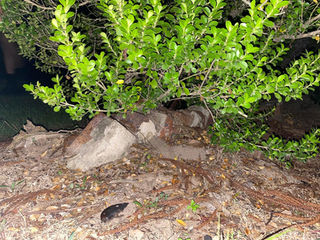

There Was Once an Asylum



This site not only provides an overview of mental health history and its implications for Goodna, but also explores the complex relationship between memory and history
There are stories we may never know, but this site uncovers the history, revealing the layers of understanding that form the foundation of the present.
It is done in a way that honours the patients, clients, and the people.
Female Patients Area
The Female Patients Area comprises a collection of highly intact 19th and early 20th-century patient buildings, located to the west of the Central Administration, Services, and Staff Residences Area, on high ground overlooking the Brisbane River.
The features of the Female Patients' Area of state-level significance include
-
The layout of buildings and landscapes, views
-
Female Wards 1 & 2 (1866 and additions and modifications in c1868, 1870, 1875, 1905, 1906, 1923, 1937, and 1951)
-
Shelter Shed for Female Patients (by 1944)
-
Garage (by 1944)
-
Anderson House (1917)
-
Residence (the 1890s-1910s, relocated c1958, c2000)
-
Bostock House (1885, extended 1901, c1924)
-
Dawson House (1944)
-
Female Bathroom Block (1902)
The layout of Buildings and Landscapes, Views. The buildings are set amongst open lawn areas and semi-formal gardens, and informally arranged in a U-shape around an open rise that was the site of other former ward buildings (former layout evidenced by remnant concrete paths and platforms).
They are approached from the south via tree-lined Ellerton Drive, from which the substantial Female Wards 1 & 2 are visually prominent across an area of open terraces that mark the sites of the former night nurse's quarters and early doctor's residences.
Other surviving early ward buildings fronting Ellerton Drive are relatively domestic in scale and have front gardens with open lawns and mature trees.
The area is uninterrupted by later development or infill.
The views of state-level cultural heritage significance include
-
From Ellerton Drive uphill to the prominently sited Female Ward 1 & 2, across the open terraces
-
From Ellerton Drive to the early ward buildings, Bostock House and Anderson House, across their front gardens
-
Panoramic views from the Female Wards 1 & 2 and their immediate surrounds, and from the open rise with a perimeter path to the north, across the riverbank bushland, Brisbane River and beyond, spanning an arc from the southwest to the north
-
The visual connection between the female patient buildings, across the open rise that was the site of other former ward buildings.










